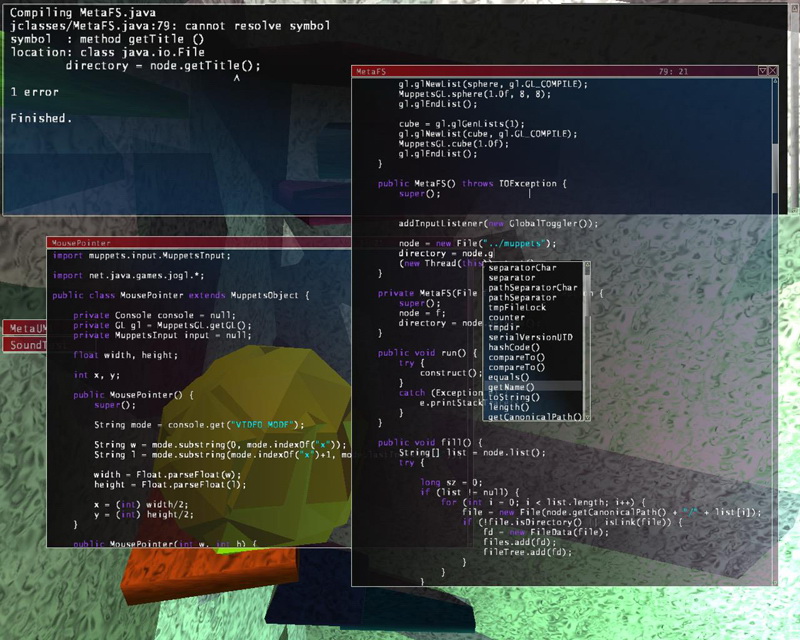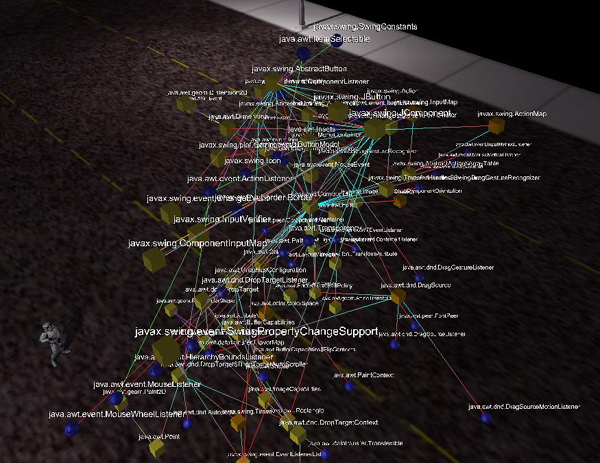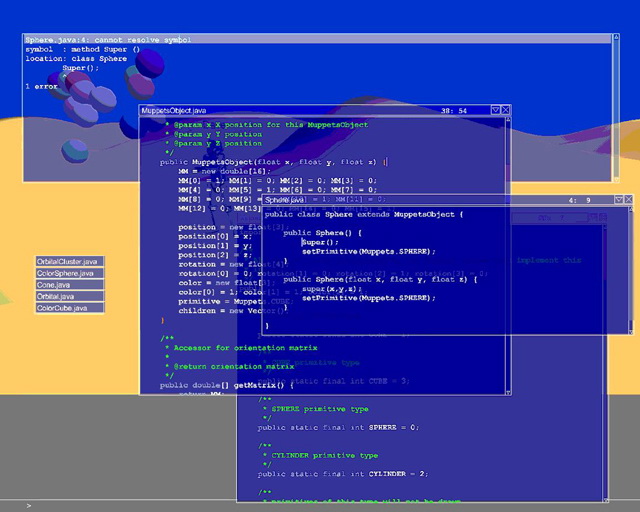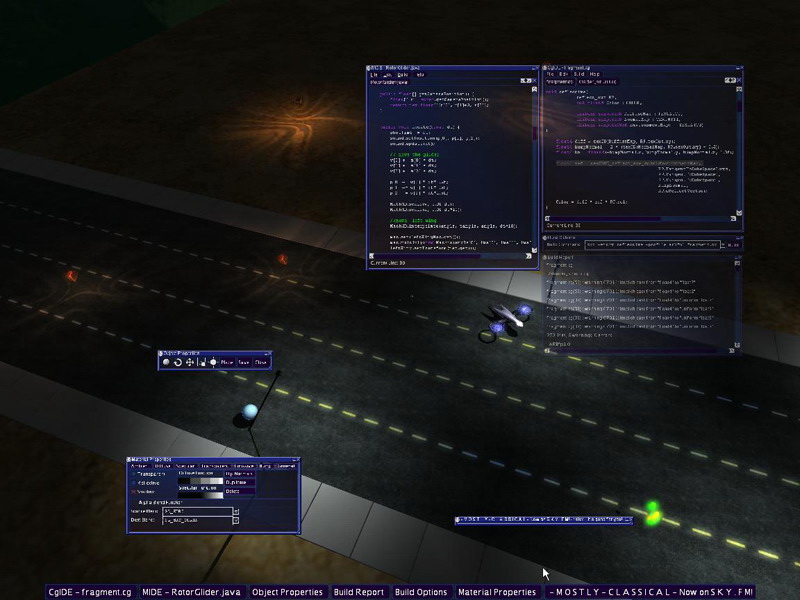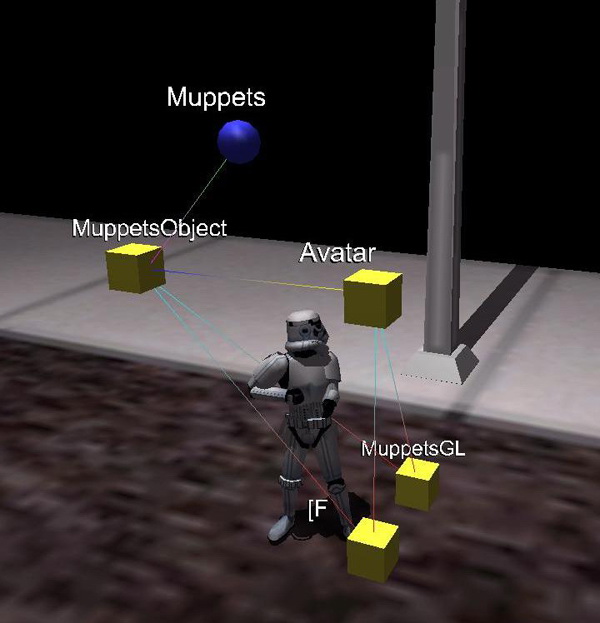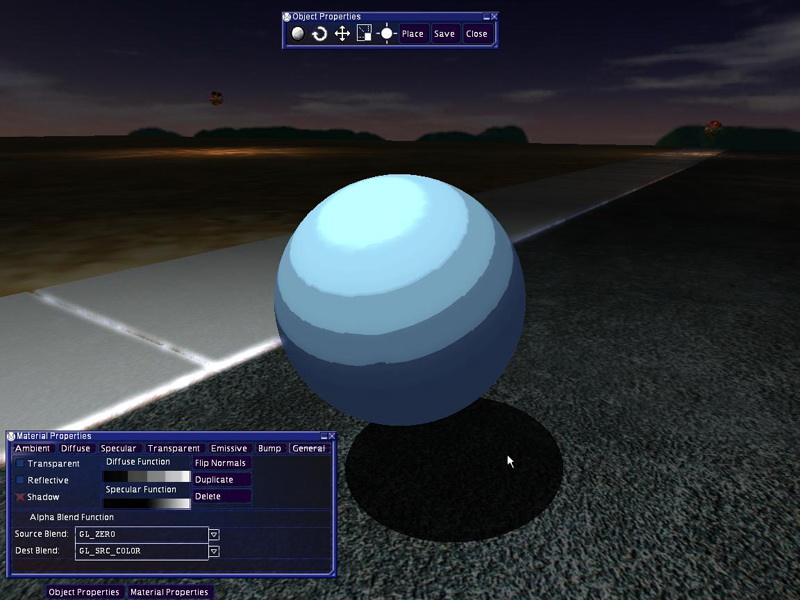 |
|
|
M.U.P.P.E.T.S. Research Group
Through capitalizing on research in the areas of gaming and virtual community social psychology, [the Interactive Games and Media Group at the Rochester Institute of Technology (]RIT[)] is engaged in a project to develop a Collaborative Virtual Environment (CVE) entitled The Multi-User Programming Pedagogy for Enhancing Traditional Study (M.U.P.P.E.T.S.).
The Multi-User Programming Pedagogy for Enhancing Traditional Study (M.U.P.P.E.T.S.) is a virtual world environment in which students can learn programming through the creation of compelling graphical, interactive content. The M.U.P.P.E.T.S. engine has been developed using state-of-the-art practices from the Entertainment Technology sector, boasting such features as OpenGL/[...] accelerated multipass rendering solutions, octree systems, support for model formats, advanced lighting and shading, and much more. Along with graphics support, the engine supports networking, user interface creation and layout, persistence mechanisms, and audio. These features are also combined with support for [object-oriented] programming languages. Involvement with this project has included the development of project materials to support objects-first pedagogy for introductory programmers. In addition, involvement has included the supervision, instruction, and co-development with students attempting to solve difficult problems within M.U.P.P.E.T.S., including managed/unmanaged code interoperability, thread management, and debugging for multi-processor systems.
MUPPETS is a desktop collaborative virtual environment (CVE) that allows students to learn introductory programming skills through the creation of objects and avatars. The goals of the MUPPETS system are twofold. First, the MUPPETS system provides a complex, interactive, collaborative playground in which introductory students can learn the fundamental principles of objects-first programming, which places emphasis upon encapsulation, inheritance, and polymorphism over traditional constructs such as selection and repetition. Objects created by introductory students can be shared with peers and upper division students. Second, the MUPPETS system provides a mechanism through which upper division students can contribute to the success of introductory students. Upper division students are responsible for the development of MUPPETS extensions as well as complex artifacts intended for use within introductory courses
Christopher A. Egert
Learning by Playing Together: The Impact of Collaborative Virtual Environments on Student Interaction and Program Cohesiveness
Over the past several years, the authors have designed and implemented a work entitled the "Multi-User Programming Pedagogy for Enhancing Traditional Study" (M.U.P.P.E.T.S.). It is the goal of this system to address the "gulf of expectation" that faces the modern student of computing, namely that students now hail from a technologically-rich background where they might play and mod games, play lists, and portable devices, but are often presented with a text-based programming curricula that solves toy problems with little or no connection to student goals. To combat this issue of self-efficacy and perception, M.U.P.P.E.T.S. allows students to create original 3D content in a shared world from the first day of coursework, and this approach has received attention at several national educational conferences [1-6]. A second problem relating to the first is the concept that student in first-year technology courses are estranged from their upper-division peers, and thus draw little motivation through juniors and seniors that are implementing what first-year students aspire to create. When this project began, there was little to no involvement between lower- and upper-division students. M.U.P.P.E.T.S., however, is used at both the lower and upper division (albeit in different ways) by everyone from first-semester freshmen to our graduate students in games and graphics. By allowing these groups to interact in a collaborative virtual environment, the attempt is made to "bridge the gap" between these populations, with anecdotal success [2, 4, 5].
But a more interesting phenomenon is emerging that we would like to discuss with [...] the social games researcher of our era: the effect that the use of this system has had on the social fabric of our student body. It is the authors belief that by moving the educational process into a self-extensible world, that this fosters not only self-exploration of technology, but that interesting effects of virtual world community involvement such as public perception, private backchannel, glory and shame metrics, etc. are transferred between the classroom, the laboratory, and the M.U.P.P.E.T.S. universe.
Images
References
[1] K. Bierre and A. Phelps, The Use of MUPPETS in an Introductory Java Programming Course, in Proceedings of the 5th Conference on Information Technology Education, pp. 122-127, 2004
[2] K. Bierre, P. Ventura, A. Phelps, and C. Egert, Motivating OOP by Blowing Things Up: An Exercise in Cooperation and Competition in an Introductory Java Programming Course, in Proceedings of the 37th SIGCSE Technical Symposium on Computer Science Education, pp. In Press, 2006
[3] A. Phelps, K. Bierre, and D. Parks, MUPPETS: Multi-User Programming Pedagogy for Enhancing Traditional Study, in Proceedings of the 4th Conference on Information Technology Education, pp. 100-105, 2003
[4] A. Phelps, C. Egert, and K. Bierre, MUPPETS: Multi-User Programming Pedagogy for Enhancing Traditional Study: An Environment for both Upper and Lower Division Students, in Frontiers in Education, 2005
[5] A. Phelps, C. Egert, K. Bierre, and D. Parks, An Open-Source CVE for Programming Education: A Case Study, in The 32nd International Conference on Computer Graphics and Interactive Techniques (SIGGRAPH) Supplemental Notes - Educators Half Day Session, 2005
[6] A. Phelps and D. Parks, "Fun and Games with Multi-Language Development, QUEUE, vol. 1, no. 10, pp. 2-12, 2004
Annotations
This project was at the first sight highly interesting, but a closer look showed us that we had here indeed the actings by C.S. of the more than 5 years before inclusive The Proposal with epistemology, object-oriented software engineering including 3D UML, collaborative virtual environments, simulations and so on, which we have integrated further with many other concepts, especially multi-paradigmatic and automatic programming, computational ontology, artificial intelligence, semantic (world wide) web, mixed reality, physics and so much more (see also Roboverse) into an operating system.
As an overall system for the visual part we have the Ontoscope component with the OntoCOVE and the related software.
